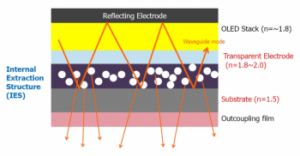Konica Minolta speaker, Takeshi Hakii OLED Unit, Advanced Layers Business Unit Manager, spoke on “Recent Progress in Flexible OLED Lighting Panels” at Printed Electronics 2015 (Santa Clara, CA, November 17-20). The Konica Minolta presentation was a useful indicator of recent progress made in developing materials and structures for OLEDs with improved performance. Takeshi Hakii described the firm’s development efforts on OLED lighting and their achievement of a world record luminous efficacy for white OLEDs of 139 lm/W.
Hakii described the basis for achieving high efficiency OLED lighting which depends on OLED material and layer design, spectral output design, light extraction and optical design, and the achievement of low drive voltage. He then went on to describe Konica Minolta’s efforts for implementing an improved blue phosphorescent emitting system and an improved internal light extraction structure that resulted in their world record OLED luminous efficacy results. Hakii reported that the proper choice of the OLED host and dopant materials played a “very important role for long life time” of the solid state light emitter. He added that controlling the exciton quenching process was also necessary “to achieve long lifetime.”
After achieving an OLED material and layer structure combination yielding high quantum efficiency and long lifetime, Hakii noted that it is also important to optimize the light extraction efficiency to achieve high efficacy. Konica Minolta’s light extraction technology is illustrated schematically in the illustration below.
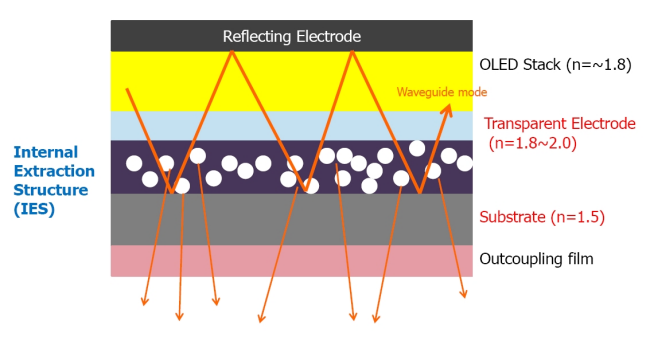 Source: Konica Minolta
Source: Konica Minolta
The key elements of this light extraction approach are the light scattering layer and a high refractive index planarization layer fabricated by printing as illustrated below.
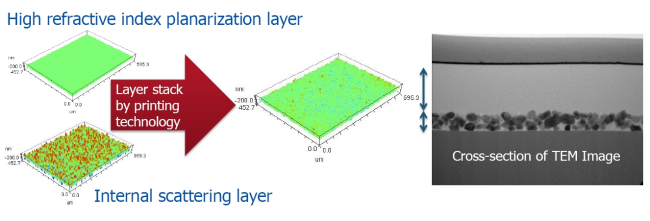 Source: Konica Minolta
Source: Konica Minolta
Although not discussed in further detail during Hakii’s presentation, the light outcoupling approach also includes a reflecting electrode on the OLED stack and an outcoupling film on the substrate side of the OLED panel. The resulting OLED structure yields the following performance.
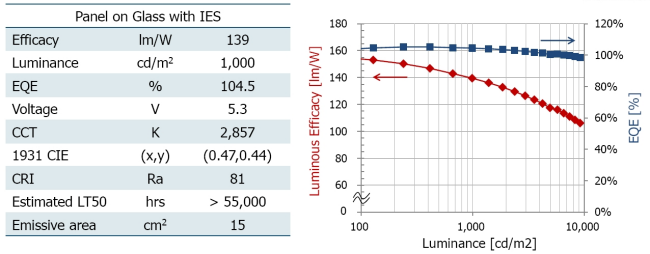 Source: Konica Minolta
Source: Konica Minolta
Konica Minolta also reported on their roll-to-roll (R2R) mass production plant for flexible OLED lighting panels and on their newly developed color tunable OLED. The R2R factory for OLEDs is located in Chuo-shi Yamanashi, Japan and has a production capacity of 1 million panels per month. Hakii stated that the factory had a mass production start in fall 2014. What was left unsaid were any details concerning the current output of the manufacturing plant including the quantity, yield and performance of panels that were actually manufactured, their use by end customers, and the price of the product produced there.
The Konica Minolta color tunable OLED was constructed using a stacked layer structure as shown in the illustration below. By developing a new transparent inter-electrode layer Konica Minolta was able to realize a color tunable OLED with three stacked RGB emitter layers with two intermediate electrodes.
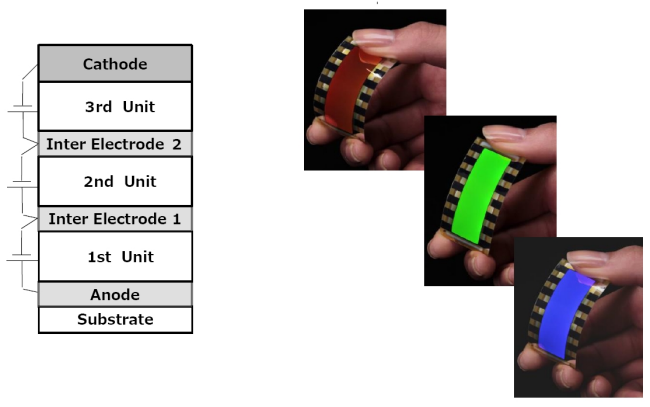 Source: Konica Minolta
Source: Konica Minolta
Further development over their initial results were required to improve the color gamut yielding color performance close to the NTSC color gamut as is shown below.
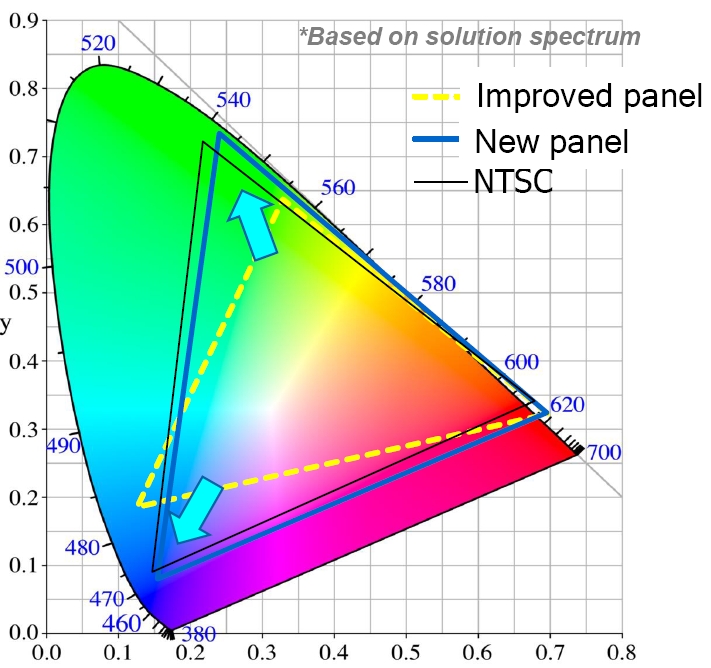 Source: Konica Minolta
Source: Konica Minolta
In summarizing his presentation, Hakii noted Konica Minolta’s key accomplishments of their OLED lighting program:
- World-record luminous efficacy of 139 lm/W using proprietary blue phosphorescent material/system and internal extraction layer
- In warm color temperature region, 139 lm/W is almost equivalent efficacy to LED light bulbs
- Flexible OLED features clear differentiation against LEDs
- Barrier film having water vapor transmission rate (WVTR) on the order of 10-6 [g/m²/day] resulting in essentially no dark spot degradation
- World’s first roll-to-roll OLED mass production using plastic substrate
Konica Minolta is making impressive gains on both technology development and manufacturing fronts. While the firm has been steadfast and making steady progress, it will be interesting to see if their manufacturing capabilities have a discernible impact on the commercial application of OLEDs for lighting. – Phil Wright

